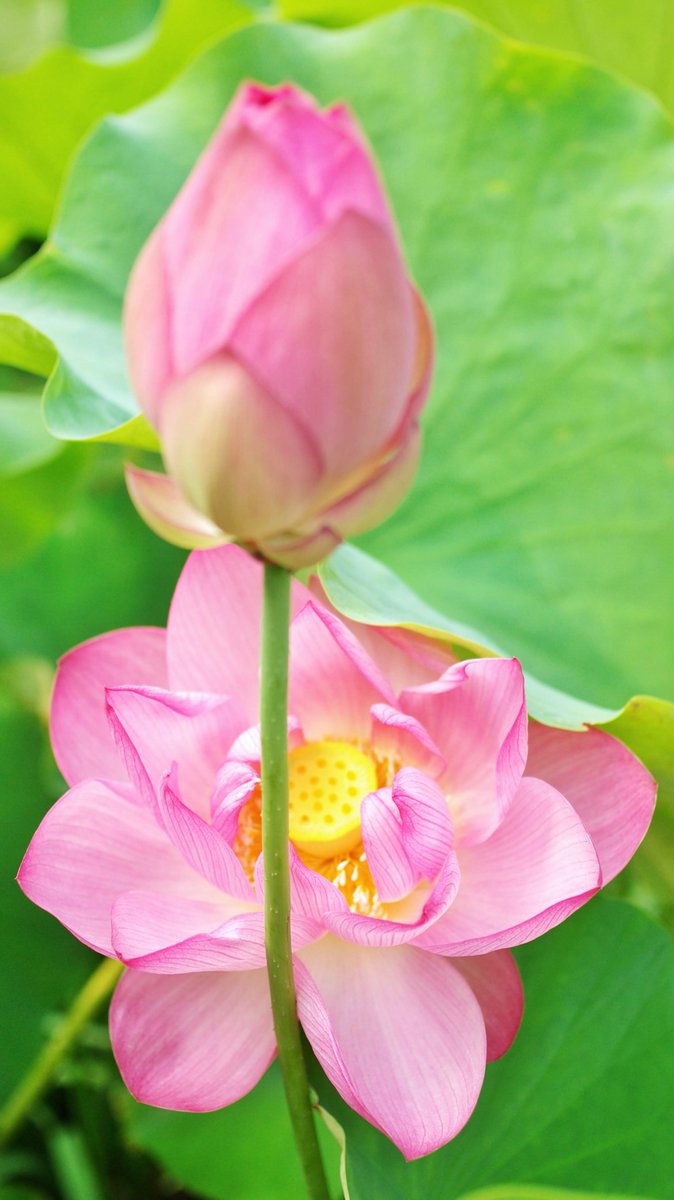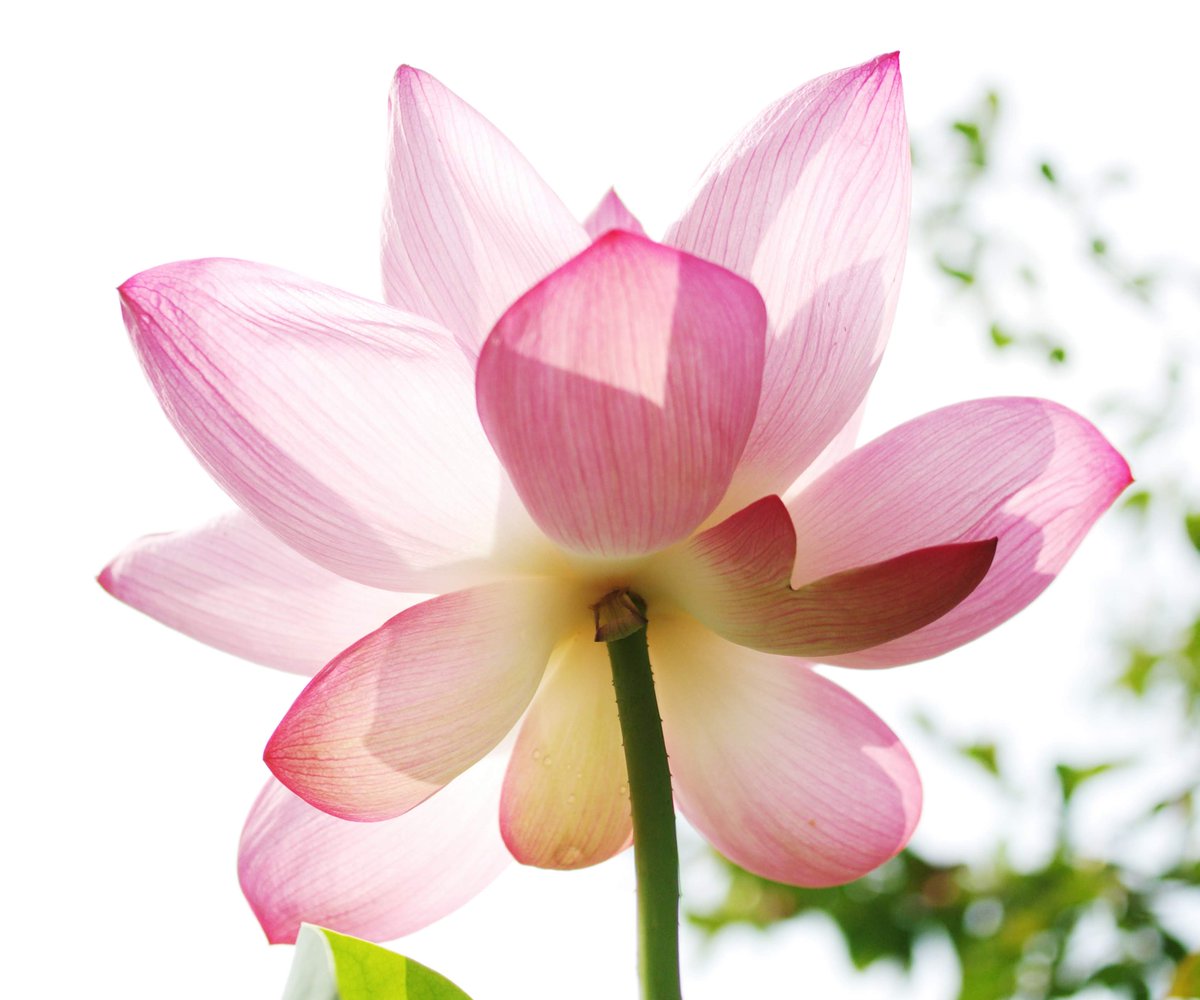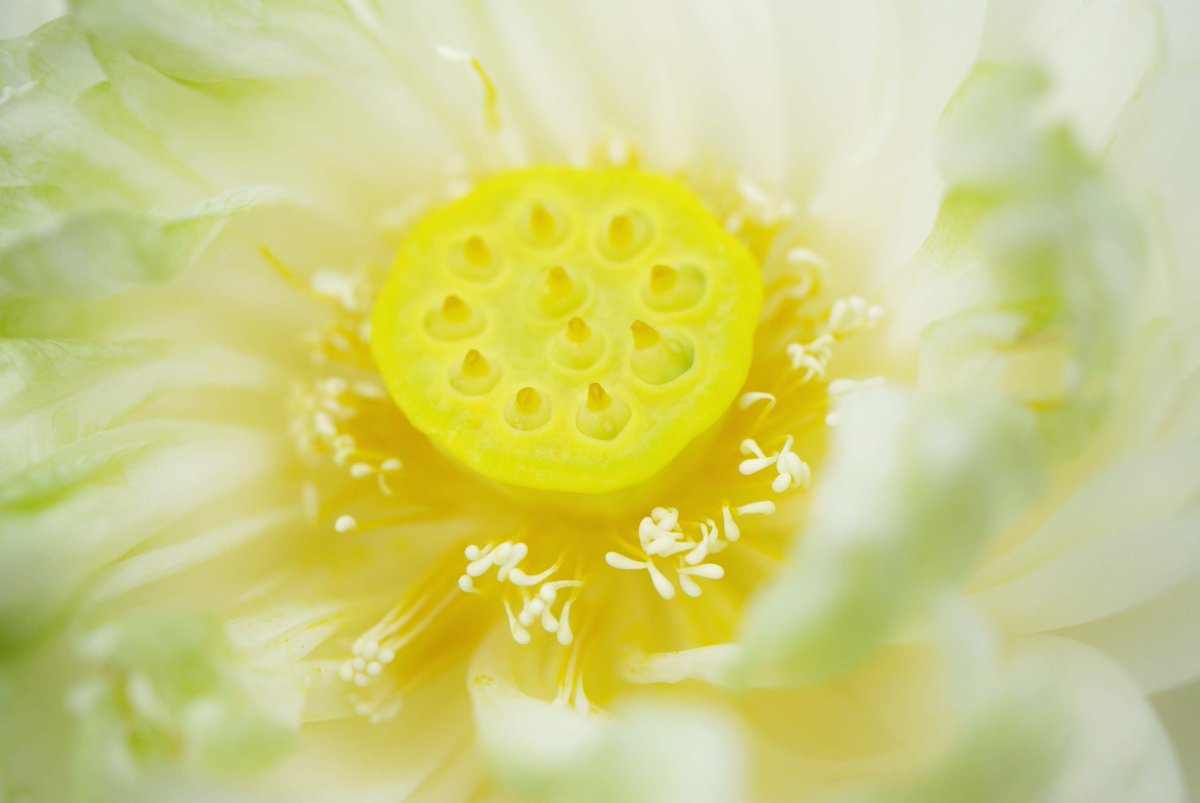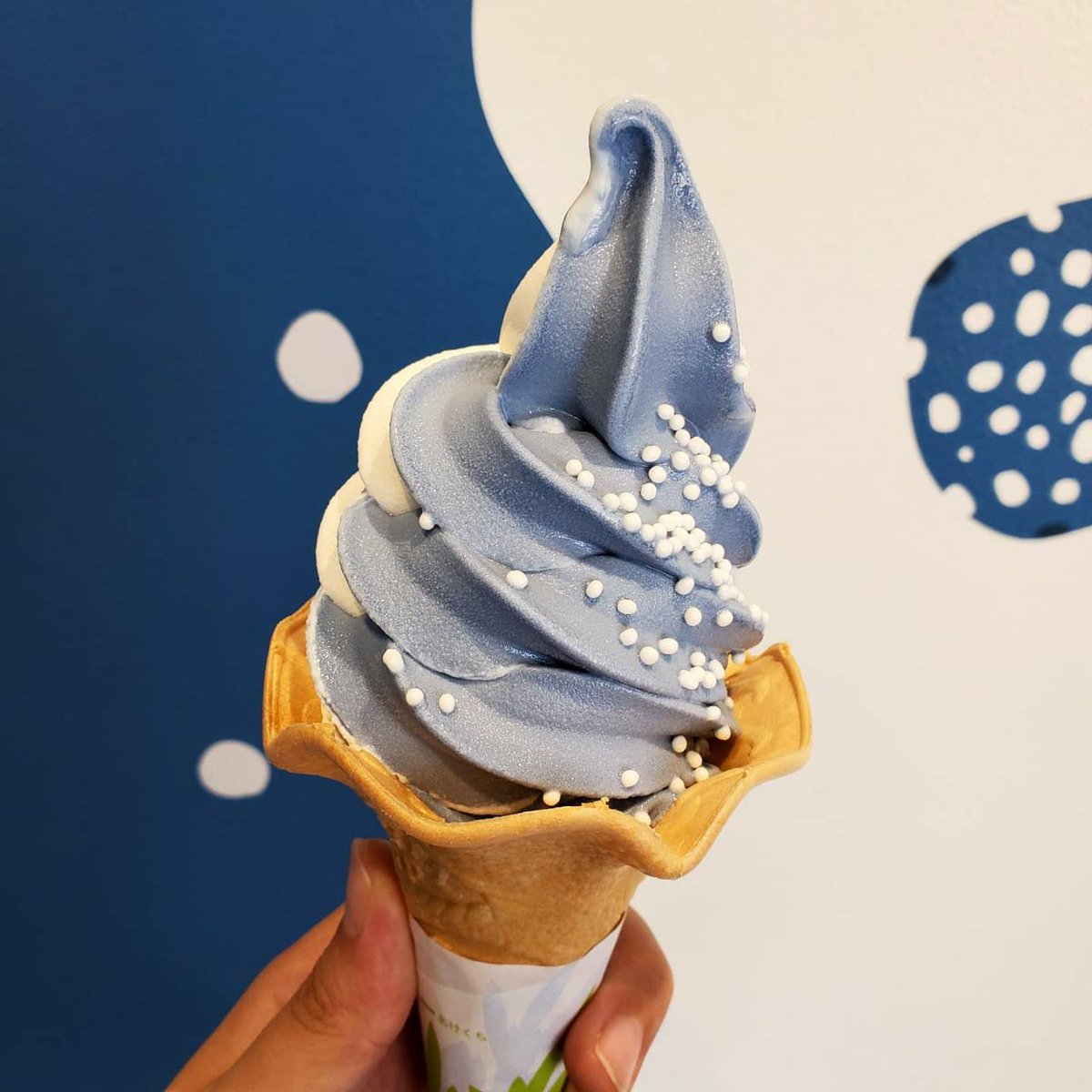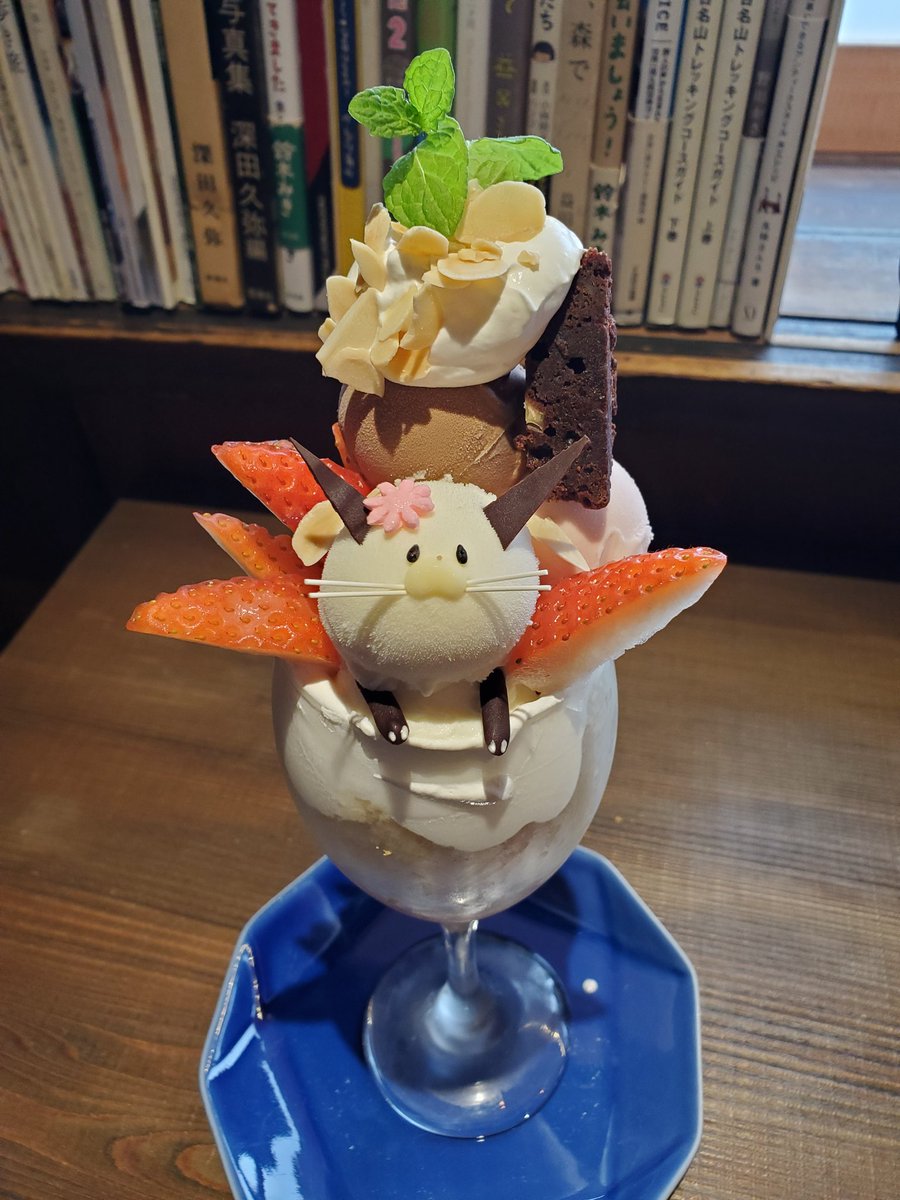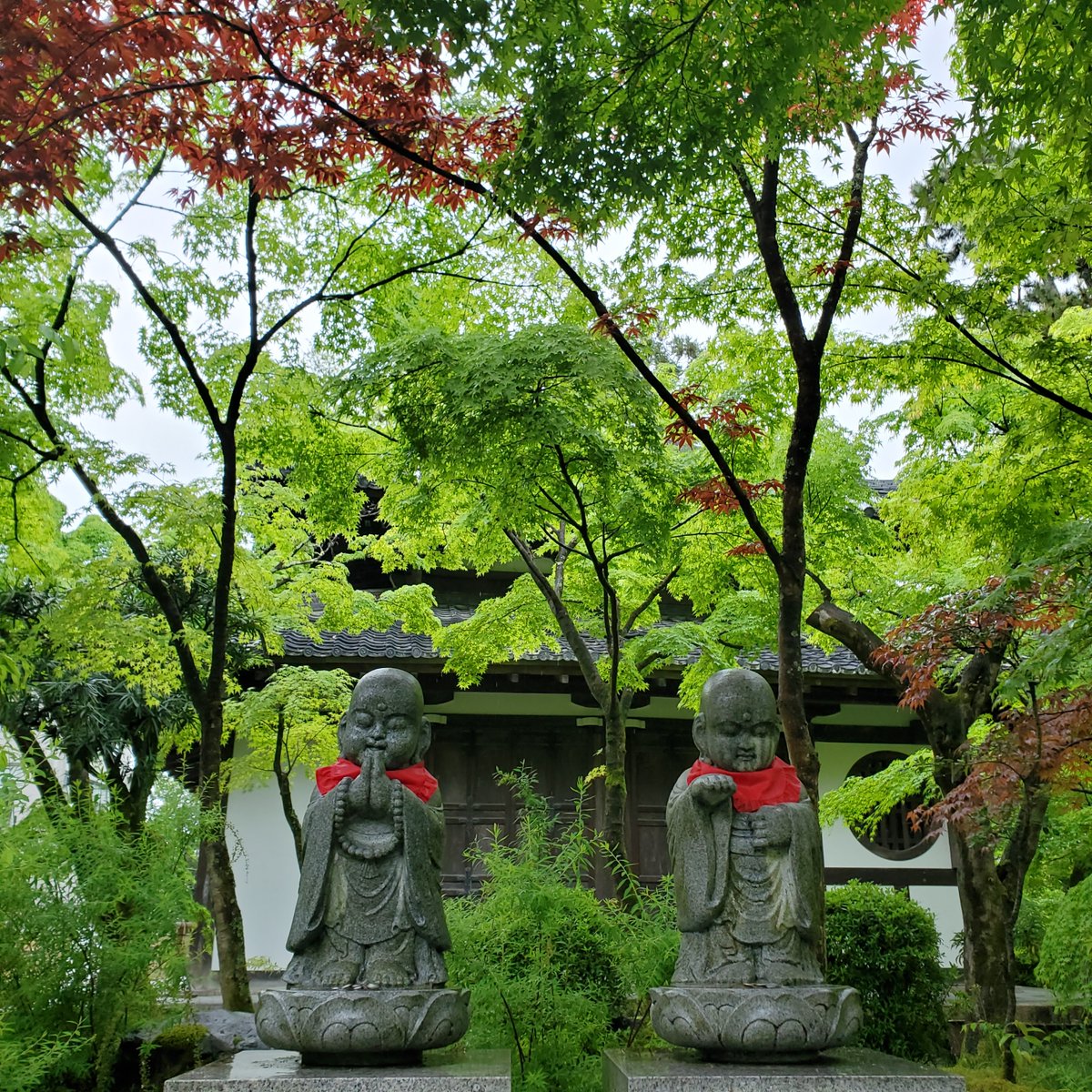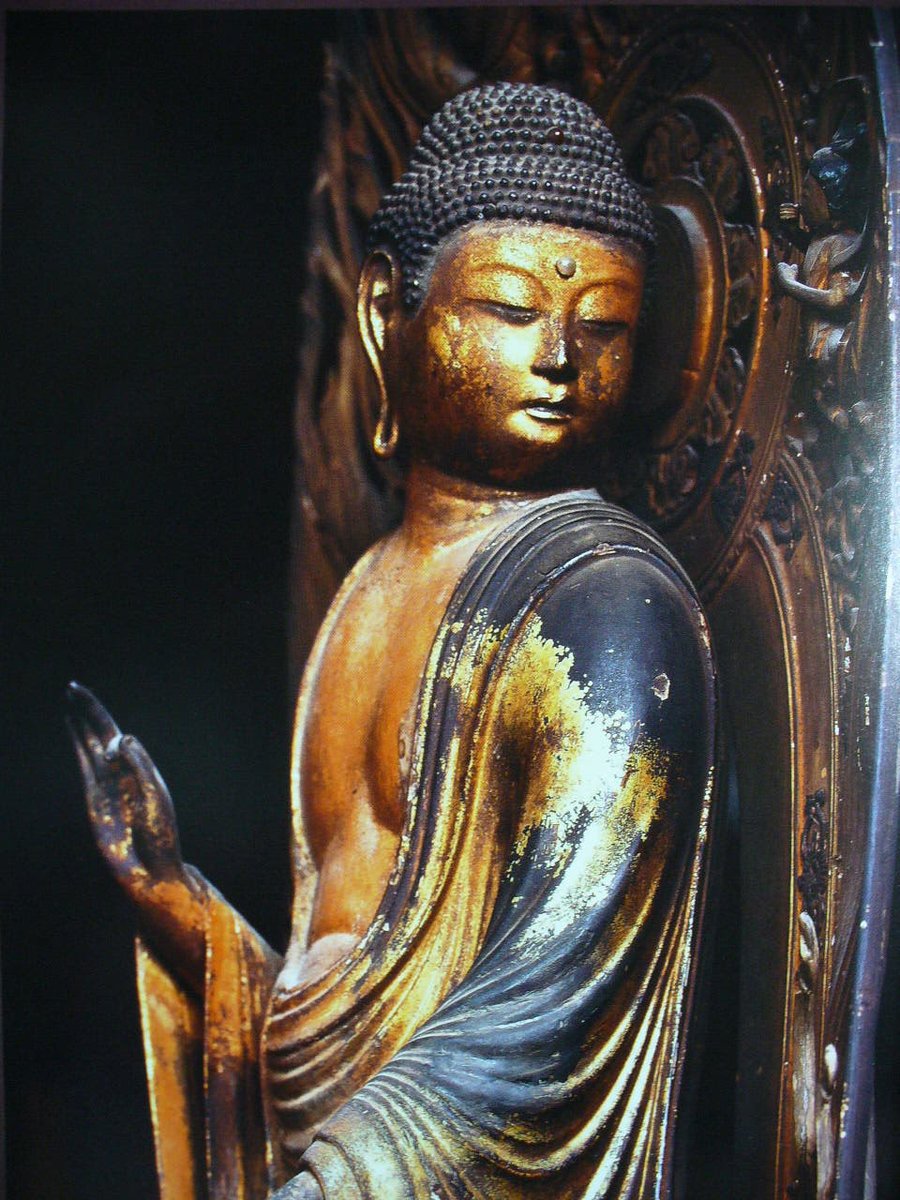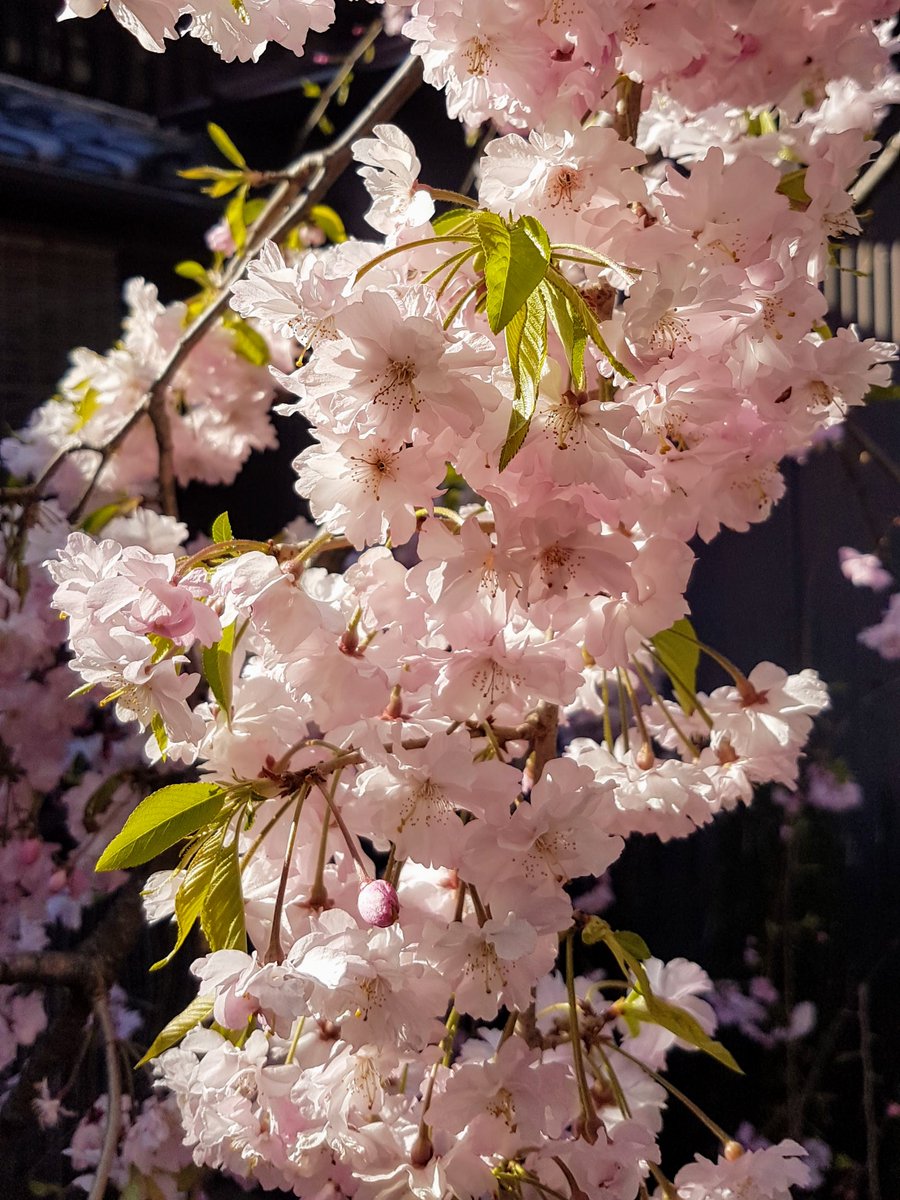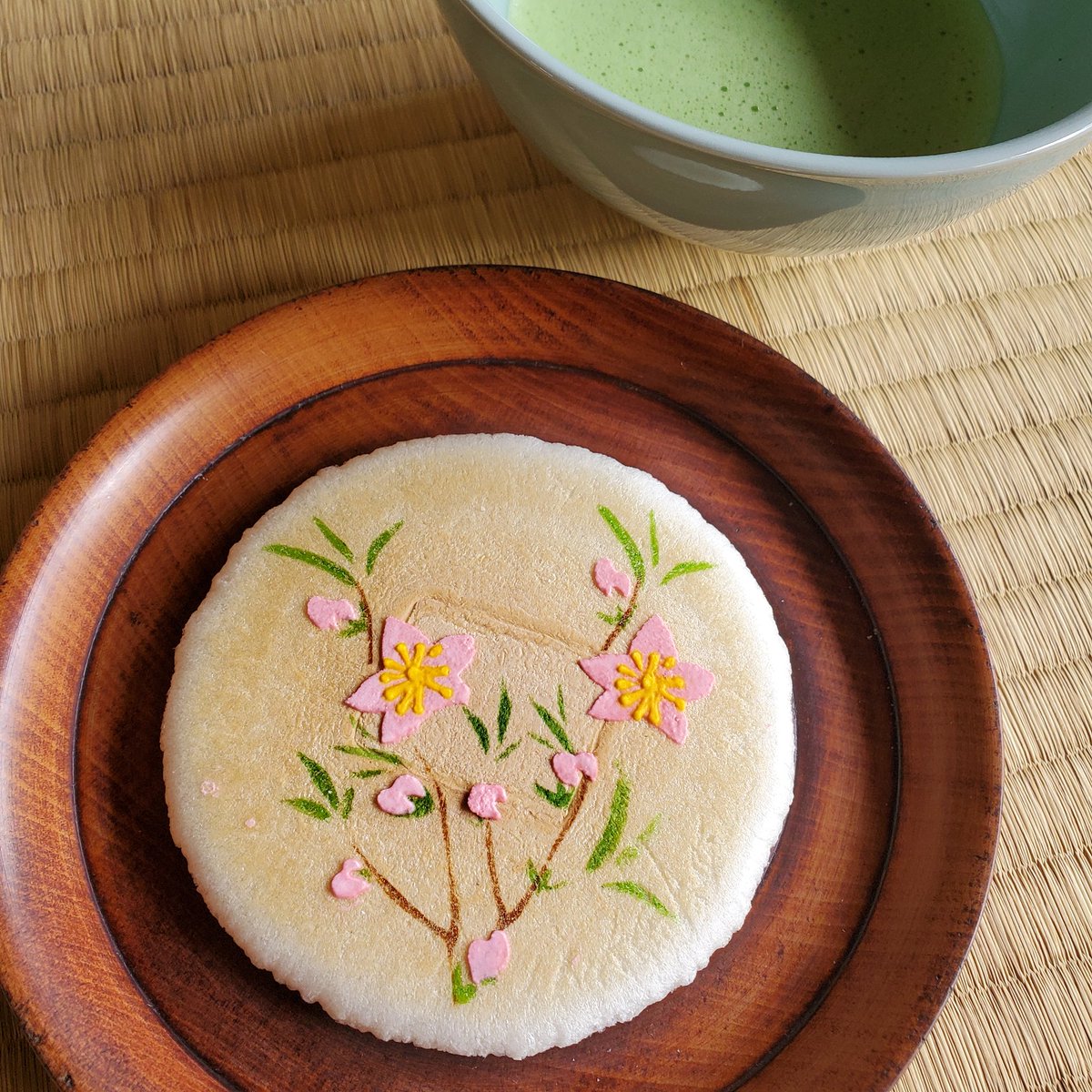
🦴😇GUARDIANS OF THE DEAD🗿🕯️
In 1903 the head priest of Nenbutsu-ji (念仏寺) and neighbouring Fukuden-ji (福田寺) began to gather up stone Buddhist statues from all around the local area.
By the time he was finished they numbered 8000!
#Kyoto #Japan #化野念仏寺 #京都 #Obon



In 1903 the head priest of Nenbutsu-ji (念仏寺) and neighbouring Fukuden-ji (福田寺) began to gather up stone Buddhist statues from all around the local area.
By the time he was finished they numbered 8000!
#Kyoto #Japan #化野念仏寺 #京都 #Obon




From ancient times the poor (and not so poor) abandoned the dead in Adashino (化野), an area that now equates with the stretch of land between Nison-in (二尊院) & Nenbutsu-ji (念仏寺).
By the Heian period it had become 1 of Heian-kyō's 3 Great Crematory Grounds (三大葬地).
#Japan



By the Heian period it had become 1 of Heian-kyō's 3 Great Crematory Grounds (三大葬地).
#Japan




Come for the statues, stay for the bamboo🎋
young bamboo
and old bamboo...
full of pluck
わか竹やとしより竹もともいさみ
-Kobayashi Issa (小林一茶), 1824.
Trans. David G. Lanoue.
#Kyoto #京都 #Japan #bamboo #化野念仏寺 #嵯峨野 #AdashinoNenbutsuji #竹 #haiku
young bamboo
and old bamboo...
full of pluck
わか竹やとしより竹もともいさみ
-Kobayashi Issa (小林一茶), 1824.
Trans. David G. Lanoue.
#Kyoto #京都 #Japan #bamboo #化野念仏寺 #嵯峨野 #AdashinoNenbutsuji #竹 #haiku
One of Kyōto's most magical events is Adashino Nenbutsu-ji's "Sentō Kuyō" (千灯供養 the "1000 Lantern Memorial Service").
On the evenings of August 23rd & 24th hundreds of candles are set before the stone images in an otherworldly display.
Photo thanks🙇♂️-kyoto-tabiya.com



On the evenings of August 23rd & 24th hundreds of candles are set before the stone images in an otherworldly display.
Photo thanks🙇♂️-kyoto-tabiya.com




The '3 Great Burial Grounds' of Kyōto (Heian-kyō 平安京):
🦴Toribe-no (鳥辺野) - east of the capital (around Kiyomizu-dera)
🦴Rendai-no (蓮台野/紫野) - close to Funaoka (船岡 - directly north of the Heian Palace)
🦴Adashi-no (化野) - west of the capital (near to Arashiyama)
#京都



🦴Toribe-no (鳥辺野) - east of the capital (around Kiyomizu-dera)
🦴Rendai-no (蓮台野/紫野) - close to Funaoka (船岡 - directly north of the Heian Palace)
🦴Adashi-no (化野) - west of the capital (near to Arashiyama)
#京都




These grisly images are from the '9 Stages of Decomposition' (九相図). They show Empress Danrin (橘嘉智子 786-850) left at the roadside upon death.
As a devout Buddhist the empress wished to show the people that beauty is fleeting, and that they should put their faith in Buddha.



As a devout Buddhist the empress wished to show the people that beauty is fleeting, and that they should put their faith in Buddha.




Right up until the Edo period small Buddhist statues were erected in Adashino (化野) to act as both grave markers and as silent guardians to watch over the dead.
By the 20thC many of these statues were forgotten, half-buried, or lost in wild undergrowth.
#Sagano #嵯峨野 #Kyoto



By the 20thC many of these statues were forgotten, half-buried, or lost in wild undergrowth.
#Sagano #嵯峨野 #Kyoto




Local people cooperated with the abbot to gather up and then position the statues about a 13-tier stone tower, as if they were listening to a sermon by Amida.
Kamakura period statues of Yakushi Nyorai (薬師如来) and Amida Nyorai (阿弥陀如来) were placed within the congregation.



Kamakura period statues of Yakushi Nyorai (薬師如来) and Amida Nyorai (阿弥陀如来) were placed within the congregation.

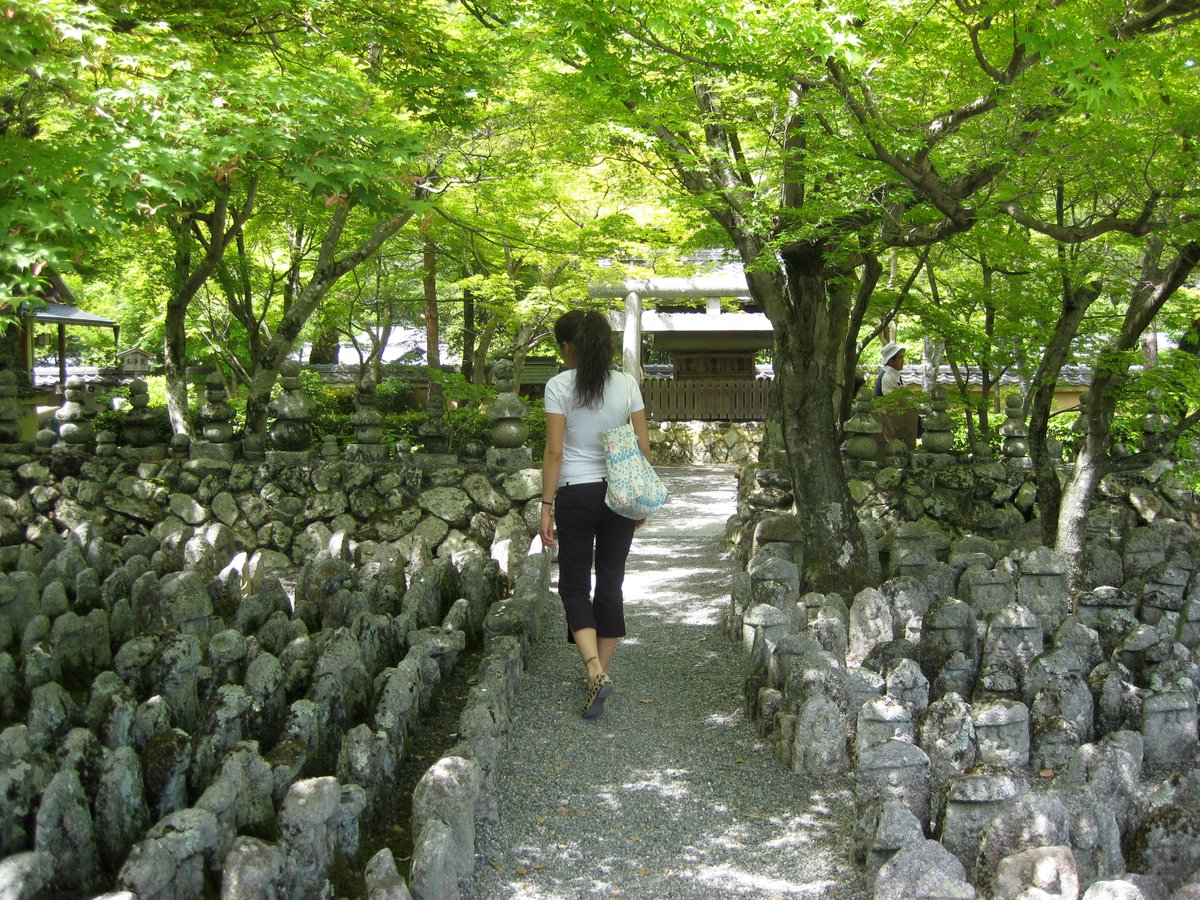


Collectively, the group of statues is known as 'Saiin-no-Kawara' (西院の河原/賽の河原), after the dry riverbed that makes up *Buddhist* children's limbo.
18m E-W and 27m N-S, the small site functions as a muenbochi (無縁墓地 - a cemetery for those who left no relatives behind).
18m E-W and 27m N-S, the small site functions as a muenbochi (無縁墓地 - a cemetery for those who left no relatives behind).
The temple has a rather charming little group of tanuki🍶
This thread is all about these gorgeous, rotund, shape-shifting beasties⬇️
#Kyoto #京都 #Japan #狸 #tanuki #化野念仏寺 #AdashinoNenbutsuji



This thread is all about these gorgeous, rotund, shape-shifting beasties⬇️
https://twitter.com/camelliakyoto/status/1420173771663568901?s=20&t=yCmFbuU6wVEmBRWCxTV0CQ
#Kyoto #京都 #Japan #狸 #tanuki #化野念仏寺 #AdashinoNenbutsuji




'Adashino' (spelt with various characters - 化野, 阿大志野 and 仇し野) has come to mean fleeting, transient, impermanent and futile.
The imagery of smoke from the funeral pyres here represented a link to death, and a wish to be reborn into Amida’s Pure Land (浄土).
#Kyoto #Japan



The imagery of smoke from the funeral pyres here represented a link to death, and a wish to be reborn into Amida’s Pure Land (浄土).
#Kyoto #Japan




The temple's origins stretch back to the early 9thC.
On the dry riverbed of Mandara-gawa (曼荼羅川の河原), which flowed between Mt Ogura (小倉山) and Mt Mandara (曼荼羅), Kūkai (空海) founded the Shingon temple of Gochizan Nyorai-ji (五智山如来寺) in 811.
#Kyoto #Kukai #空海



On the dry riverbed of Mandara-gawa (曼荼羅川の河原), which flowed between Mt Ogura (小倉山) and Mt Mandara (曼荼羅), Kūkai (空海) founded the Shingon temple of Gochizan Nyorai-ji (五智山如来寺) in 811.
#Kyoto #Kukai #空海




Kūkai equated Mt Ogura (小倉山) with the Diamond Realm (金剛界) & Mt Mandara (曼荼羅) with the Womb Realm (胎蔵界), creating a holy space for the spirits of the dead left at Adashino.
It is said he buried 1000 Buddhist statues along the dry riverbed to protect the land.
#folklore



It is said he buried 1000 Buddhist statues along the dry riverbed to protect the land.
#folklore




Enshrined within the temple (or possibly buried with the other statues) were the 'Gochi Nyorai' (五智如来 the '5 Wisdom Buddhas'), especially important to the Shingon sect (真言宗).
Before long the temple came under the jurisdiction of powerful Daikaku-ji (大覚寺).
#Japan #Kyoto



Before long the temple came under the jurisdiction of powerful Daikaku-ji (大覚寺).
#Japan #Kyoto




The area's ancient graveyard was referenced in countless poems (和歌) as 'Adashino-no-Tsuyu' (化野の露 'The Dews of Adashino'), symbolising mortality.
One of the most famous poems about Adashino can be found in Chapter 53, 'Tenarai' (手習), of 'The Tale of Genji' (源氏物語).



One of the most famous poems about Adashino can be found in Chapter 53, 'Tenarai' (手習), of 'The Tale of Genji' (源氏物語).



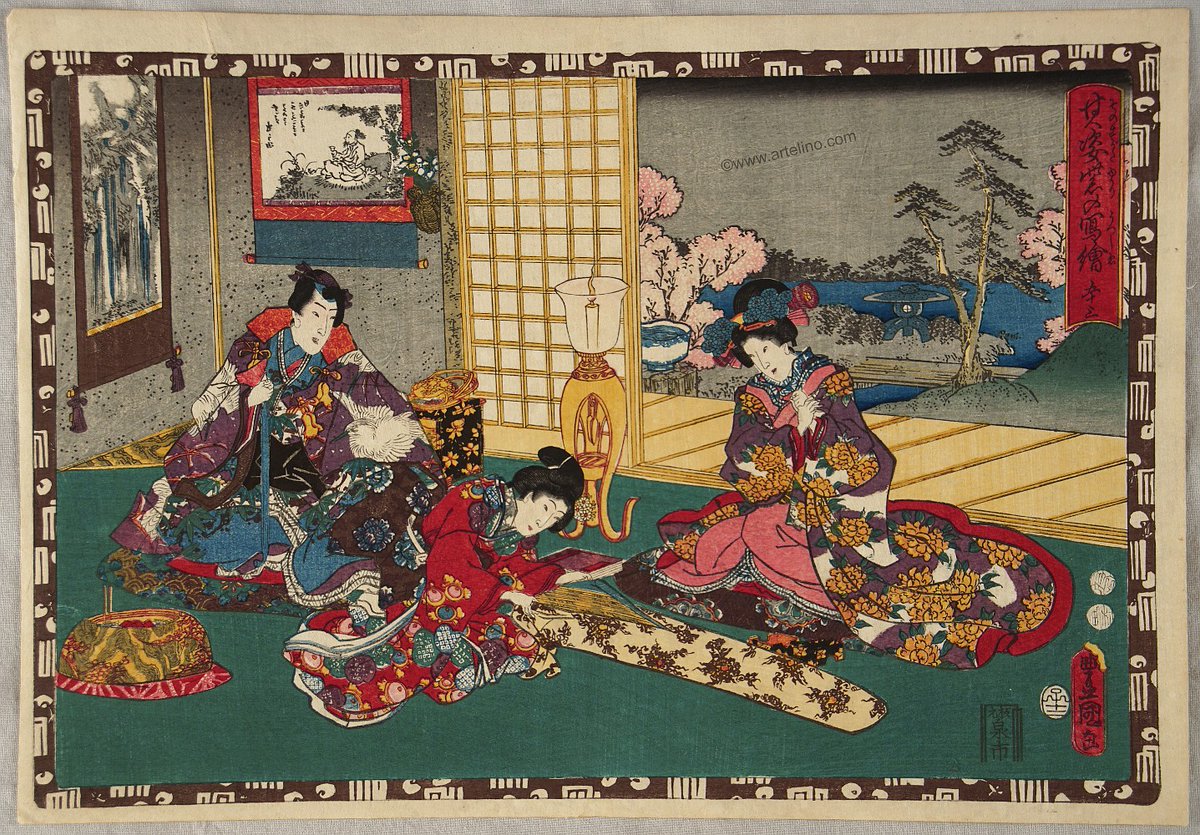
"O maiden flower, bend not to Adashino's gales.
I came the long road to make for you a windbreak."
あだし野の風になびくな女郎花われしめゆはん路遠くとも
-Written by Chūjō to Ukifune (中将が浮舟).
#thetaleofgenji #源氏物語 #MurasakiShikibu #Kyoto #浮舟 #中将 #Japan #Adashino
I came the long road to make for you a windbreak."
あだし野の風になびくな女郎花われしめゆはん路遠くとも
-Written by Chūjō to Ukifune (中将が浮舟).
#thetaleofgenji #源氏物語 #MurasakiShikibu #Kyoto #浮舟 #中将 #Japan #Adashino
For hundreds of years the land remained an open-air graveyard. Thousands of grave markers and statues littered the landscape.
Hōnen (法然 1133-1212) later built a dōjō to practise the Nenbutsu and renamed the temple Nenbutsu-ji (念仏寺). It was converted to the Jōdo sect.
#Kyoto



Hōnen (法然 1133-1212) later built a dōjō to practise the Nenbutsu and renamed the temple Nenbutsu-ji (念仏寺). It was converted to the Jōdo sect.
#Kyoto




"If we lived forever, if the dews of Adashino never vanished, if the crematory smoke on Toribeyama never faded, men would hardly feel the pity of things.
The beauty of life is in its impermanence."
–Yoshida Kenkō (吉田兼好 1283-1352), Essay 7 of the 'Tsurezuregusa' (徒然草).



The beauty of life is in its impermanence."
–Yoshida Kenkō (吉田兼好 1283-1352), Essay 7 of the 'Tsurezuregusa' (徒然草).




あだし野の露消ゆる時なく、鳥部山の煙立ち去らでのみ住み果つる習ひならば、いかにもののあはれもなからん。世は定めなきこそいみじけれ。
-Yoshida Kenkō (吉田兼好), writing about life's transience in his 'Tsurezuregusa' (徒然草 'Essays in Idleness' 1330-32).
#Kyoto #Japan #Sagano



-Yoshida Kenkō (吉田兼好), writing about life's transience in his 'Tsurezuregusa' (徒然草 'Essays in Idleness' 1330-32).
#Kyoto #Japan #Sagano




The current main hall was built in 1712 by the priest Jakudō (寂道). It enshrines a wooden, 150cm seated statue of Amida said to have been carved by famed Kamakura period sculptor Tankei (湛慶).
At this time the temple looked dramatically different and included 2 large shrines.



At this time the temple looked dramatically different and included 2 large shrines.




Nenbutsu-ji (念仏寺) is mentioned in the 1786 publication 'Shūi Miyako Meisho Zue' (拾遺都名所図会 'Images of Famous Places in Kyōto'), marking it out as a popular pilgrimage site even before the 8000 statues were gathered.
#Kyoto #京都 #Japan #化野念仏寺 #AdashinoNenbutsuji



#Kyoto #京都 #Japan #化野念仏寺 #AdashinoNenbutsuji




"The only thing that should remain at Adashino
should be the dew from the sea clinging to the grass and leaves."
誰とても
とまるべきかは
あだし野の
草の葉ごとに
すがる白露
-Saigyō Hōshi (西行法師 1118-90).
Trans. Justin Velgus.
#folklore #Kyoto #京都 #Japan #嵯峨野
should be the dew from the sea clinging to the grass and leaves."
誰とても
とまるべきかは
あだし野の
草の葉ごとに
すがる白露
-Saigyō Hōshi (西行法師 1118-90).
Trans. Justin Velgus.
#folklore #Kyoto #京都 #Japan #嵯峨野
• • •
Missing some Tweet in this thread? You can try to
force a refresh



























